Our Products & Services
Getting Started
First Time Setup
Getting Started With Jobs
Getting Started with Accounts
Getting Started with Inventory
Getting Started with Ticketing
Setting Sonar up for Billing
Baseline Configuration
How To: Using Sonar's Customer Portal
User Specific Resources
Accounts
Account Groups: Overview & Example Use Cases
Account List View: Overview
Account Management View: Overview
Account Overview Customization
Account Statuses: Overview & Example Use Cases
Account Types: Overview & Example Use Cases
Anchor & Linked Serviceable Addresses: Overview and Best Practices
Archiving an Account: Overview
CPUC Fixed Broadband Deployment by Address
Child Accounts: Best Practices & How Tos
Creating a New Account
Direct Messages: Overview
Disconnecting an Account
Disconnection Reason Management: Overview
Exploring Task Groups
FCC Broadband Data Collection (BDC) Filings: How Sonar Can Help
FCC Data Exports: General Overview and Usage
Future Serviceable Addresses: Overview
Lead Intake Form Processing
Notes: Best Practices & Use Cases
Scheduled Events: Overview & Use Cases
Serviceable Addresses: Overview and Usage
Specify Account ID upon Creation
Tasks & Task Templates: Overview
Using Sonar's FCC Broadband Label Generation Tool
Billing
ACH Batching: Overview
Accounts in Vacation Mode
Avalara: Overview & Setup
Batch Payments & Deposit Slips: Overview
Billing Calculator
Billing Defaults
Billing Settings
Building Packages
Building a Data Service
Canadian ACH tool
Changing Service Pricing in Sonar: Best Practices
Considerations When Using Avalara with Voice Services
Creating Discounts for Services and Packages
Delinquency Billing Best Practices
Delinquency Exclusions: Overview and Use Cases
Dual Data Services: Overview
Email Invoice Batch: Overview
General Ledger Codes: Overview
General Transactions: Best Practices
How Sonar Prorates Billing
How to Take Bank Account Payments
How to: Adding a Service to an Account
Invoice Templates: Overview
Leveraging PayPal as a Payment Method in Sonar
Manual Transactions
Multi-Month Billing & Multi-Month Services
Print to Mail
Printed Invoice Batches: Overview
Services: Overview
Setting Up Payment Methods and Taking Payments
Setting up Bank Account & Credit Card Processors
Taxes Setup
Usage Based Billing Policies: Overview and Usage
Usage Based Billing Policy Free Periods: Overview and Usage
Using Tax Exemptions - How To
Communication
Communications: Call Logs Overview & Best Practices
Communications: Messages Overview
Email Variables & Conditions
Message Categories: Overview & Use Cases
Phone Number Types: Overview and Use Cases
Saved Messages: Overview
Setting up an Outbound Email Domain
Trigger Explanations
Triggered Messages: Setup
Using Outbound SMS
Using the Mass Message Tool
Companies
How to: Setting Up a Company in Sonar
Managing Multiple Companies in Sonar: Best Practices
Rebranding your Sonar Instance
Financial
Contract Templates
Invoice Attachment Use Cases & PDF Examples
Invoice Messages: Overview & Use Cases
Invoices in Sonar: Examples, Creation & Contents
Integrations
Atlas Digital CORE Integration
Calix Cloud Data Field Mappings
Calix SMx Integration: Overview
CrowdFiber Integration
External Marketing Providers
GPS Tracking Providers: Overview
GoCardless Integration: Overview & Setup
How to Connect Cambium to your Sonar Instance
How to Connect Preseem to your Sonar System
How to: Using Webhooks in Sonar
Integrating with Calix Cloud
RemoteWinBox - Integration with Sonar
Sonar Retain: AI-Powered Customer Retention & Quality Intelligence
The Sonar Field Tech App
Tower Coverage Integration: Overview
VETRO FiberMap V2 Integration: Overview
VETRO FiberMap V3 Integration: Overview
Webhooks in Sonar: Basic PHP Example
iCalendar Integration
Inventory
Inventory List View: Overview
Inventory Model Management: General Overview
Network Inventory: How-to & Usage Guide
Segmentable Inventory: How-to & Usage Guide
Setup of Inventory: Manufacturers, Categories, and Assignees
Tracking and Using Consumable Inventory
Jobs
Applying Task Templates to Jobs
Edit Job Options
Example Jobs & Templates
Geofences: Overview
Job Types: Best Practices
Jobs and Scheduling: Overview
Scheduling How-to: Creating and Booking a Job
Scheduling Week View: Overview
Setting Up Schedules General Overview
Mapping
Misc.
Combining Custom Fields & Task Templates for Information Storage
Custom Fields Overview & Use Cases
Custom Links: Overview
Task Templates Overview & Use Cases
Monitoring
Building Alerting Rotations
Building a Monitoring Template
Poller Troubleshooting
Pollers: General Overview, Deployment Strategy, Build Out & Setup
Networking
Adtran Mosaic Cloud Platform Integration: Overview
Assigning RADIUS Addresses
Assigning an IP Address Using Sonar's IPAM: How to
Automating IP Assignments, Data Rates, and Network Access in Sonar
Building Address Lists
Building RADIUS Groups
Building a Device Mapper
Cable Modem Provisioning
Controlling Customer Speeds with Sonar: General Overview
DHCP Delivery
Data Usage Available Methods
Finding your OIDs
FreeRADIUS 3: Build-Out & Integration
How Sonar Communicates - Egress IPs Explained
IP Assignments & Sonar
IPAM: Basic Setup
IPAM: Overview
LTE Integration
MikroTik as an Inline Device: Integration With Sonar
MikroTik: Controlling Access
MikroTik: Controlling Speeds
MikroTik: Setting Up a Sonar Controlled DHCP Server
Netflow On-Premise Integration: Setup and Overview
Network Dashboard: Overview
Network Sites: Management View Overview
PacketLogic: Integration With Sonar
Pulse, Polling, and PHP
RADIUS: Build-Out & Integration with Sonar
RADIUS: Building Reply Attributes
Setting Up CoA Proxy
Sonar Flow
Sonar IP Addressing
Using Multiple Network Devices in Sonar
Purchase Orders
Release Notes
Reporting
Enhanced Business Intelligence - Tips & Tricks for Advanced Users
How To Enhance Your Reporting With Custom Field Data
Report Licenses
Sonar's Business Intelligence: Overview
Understanding Sonar Reports
Using Sonar DataConnect to Connect BI Applications with Your Sonar Instance
Security
Application Firewall: General Overview and Best Practices
Auth0: Overview
Multi-Factor Authentication: Overview
Password Policy In Depth
Removing a Terminated Employee In Sonar
Role Creation using GraphiQL
User Role Creation & Best Practices
Users: Overview
Sonar Billing
sonarPay
sonarPay Canada Disbursements: Overview
sonarPay Chargebacks & Disputes: Overview
sonarPay Disbursements: Overview
sonarPay Monthly Statement: Overview
sonarPay Overview
sonarPay Reversals, Voids, & Refunds: Overview
sonarPay: Token Migration Process
System
A Deeper Dive into the New Sonar API
API Calls Using Third Party Applications: Personal Access Tokens
Browser Compatibility and Minimum Hardware Requirements for Sonar
Consuming the Sonar API
Controlling Your Landing Page: Personal Preferences
Customizing Your Customer Portal
Date/Time Picker: Overview
Dynamic Time Zones in Sonar
Filtering: Overview
Frequently Used Terms
Getting Your Data into Sonar
GraphQL Rate Limiting Overview
How To Use GraphiQL to Understand the Sonar API
How Your Data is Backed Up
How to Best Use Global Search
Interacting with Files via the API
Introducing the New Sidebar
Main Menu: Overview
Mutations in the Sonar API
Notification Preferences
REST API Wrappers for V1 Compatibility
SMS Notifications
Sonar's Rich Text Editor
System Settings: Overview
The New Sonar API
Troubleshooting the Customer Portal
Upgrading your Ubuntu OS - Customer Portal Upgrades
User Profile: Your Personal User Settings
Ticketing
Advanced Ticketing Features
Canned Replies Examples & Templates
Canned Reply Categories
Exploring Ticket Groups
How Sonar Manages Spam Tickets
How to Integrate Inbound Mailboxes with Slack
Inbound Mailboxes Example Build
Ticket Category Families & Ticket Categories: Overview
Ticket Resolution Reasons: Overview
Ticketing: Overview
Using Parent Tickets
Voice
API Changes for Voice Billing
Best Practices to Remain CPNI Compliant
Billing Voice Services in Sonar
Deploying Voice Services in Sonar
Working With the Sonar Team & Additional Resources
Sonar's Security Practices & Certifications
Sonar and General Data Protection Regulation (GDPR)
Sonar's Security Strategies
Technical Security Overview
Best Practices for Fast Tracking a Support Request
Feedback Portal / Suggest a Feature
Learning with Sonar: Tools and Resources
New Client Training Overview
Sonar Casts Table of Contents
Submitting Bugs vs. Feature Requests
The Sonar Community Forum
The Sonar Status Page
Third Party Customer Support Referrals
Table of Contents
- All Categories
- System
- User Profile: Your Personal User Settings
User Profile: Your Personal User Settings
 Updated
by Jennifer Trower
Updated
by Jennifer Trower
Read Time: 6 mins
The personal user settings page (also known as the “User Profile” page) houses information specific to your individual user within the Sonar instance. This article will provide an overview of the information contained here and how you can interact with it.
Navigating to Your User Settings
Navigating to your user settings page can be done quickly from any screen within Sonar. Clicking on your avatar from the top right corner will automatically open the User Profile page.

User Profile Overview
An overview and explanation of the content found on this page and the actions available to you are provided below.

- Main Header: this main panel displays the full name of the user, along with the “My Info” indicator to let you know which page you are currently viewing. This panel also contains additional user-specific details, such as:
- Name: the full name of the user.
- Username: the name that is used to access the Sonar instance.
- Public Name: the name that can be used to appear in public replies, such as in ticketing.
- Role: the role of the user within the instance; if the user is not a Super Admin, the specific role applied to their instance user will appear here.
- Update Info: clicking this button will open a window where you can view and modify any of the data that is displayed within the main header panel or the contact information section of the User Profile page. From here, you can also set the language preference for your instance user, along with a paginator size, and change your password.
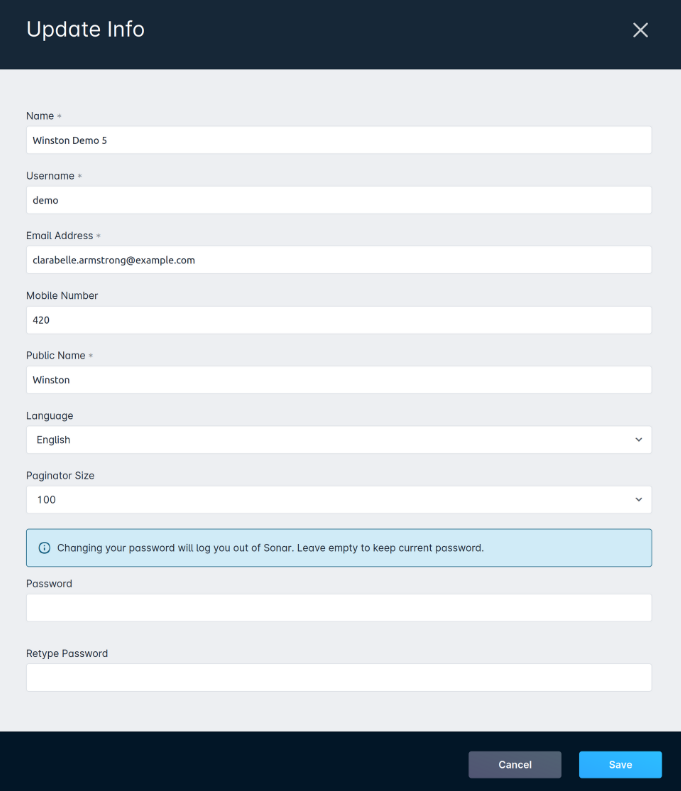
- Logout: this option populates a confirmation window. Once confirmed, you will be logged out.
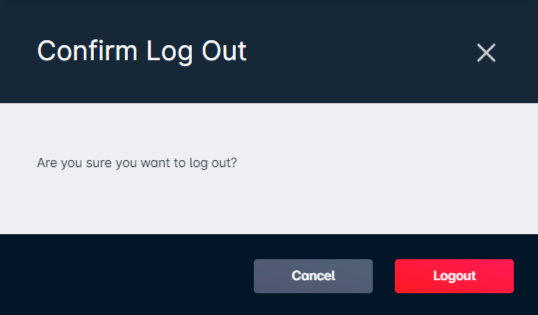
- Contact Information: the phone number and email address set up for the user will be listed here; the phone number listed will also have click-to-call functionality
- Calendar Integrations: the iCalendar Feed option is found here. Allowing the user to generate, regenerate, and copy the calendar link needed to integrate jobs, time off, and blocked events for outside calendars.
- Personal Preferences: the Default page on login option is listed here for the user.
- Default page on login: using this option will override the landing page for the user once they have logged into the instance. By default, this option is set to “Accounts”.
Default page on login Options
Not all options will be available to all users. Some options require specific permissions to view and select.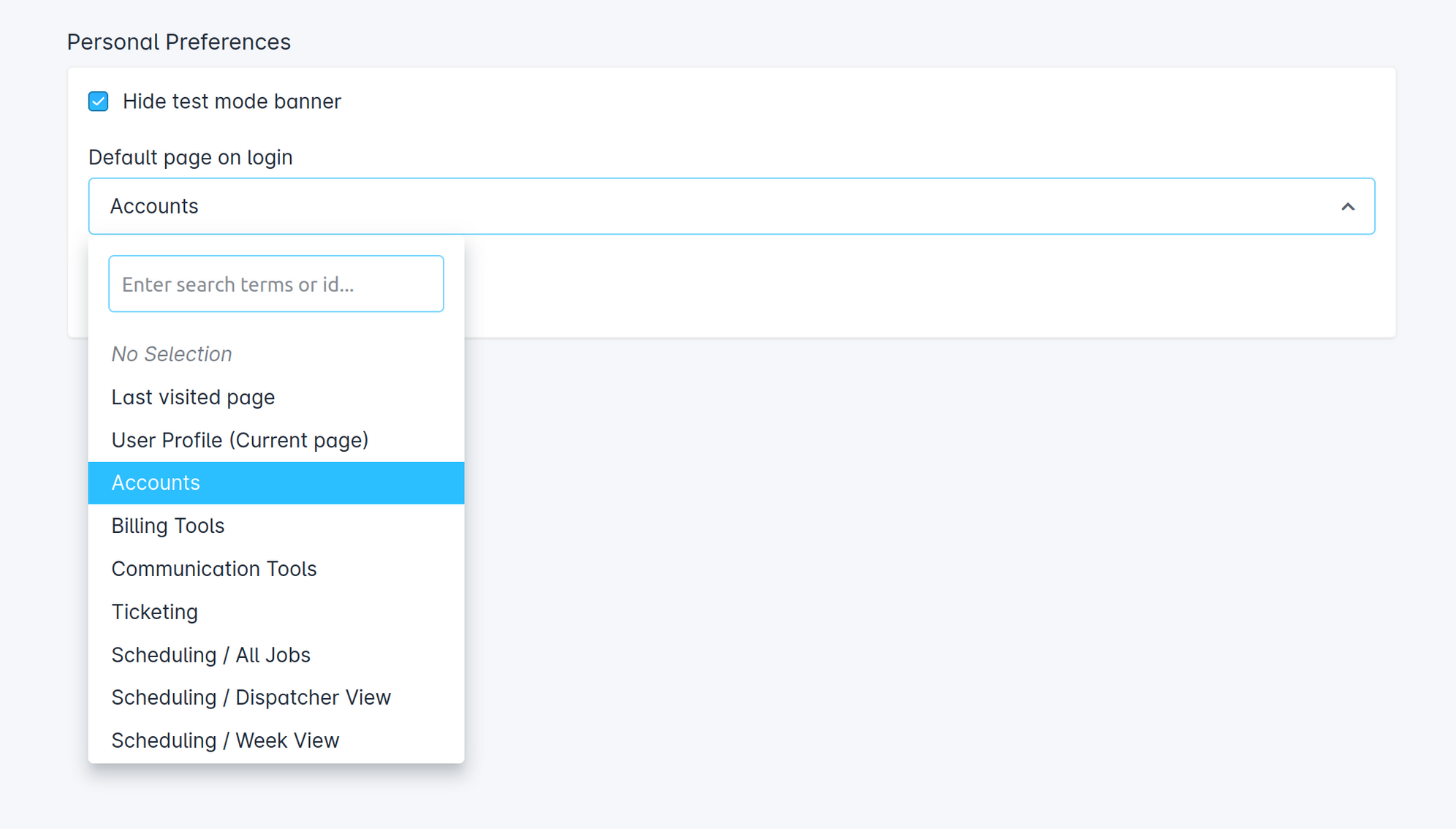 1. Last visited page: this option causes the instance to remember the user's last visited page. Upon logging into the instance this would be the page populated.
1. Last visited page: this option causes the instance to remember the user's last visited page. Upon logging into the instance this would be the page populated.
2. User Profile (Current page): this option causes the landing page to be the User Profile page, upon logging into the instance.
3. Accounts: this option causes the landing page to be the Accounts page, upon logging into the instance.
4. Billing Tools: this option causes the landing page to be the Billing Tools page, upon logging into the instance.
5. Communication Tools: this option causes the landing page to be the Communication Tools page, upon logging into the instance.
6. Ticketing: this option causes the landing page to be the Ticketing page, upon logging into the instance.
7. Scheduling / All Jobs: this option causes the landing page to be the Scheduling / All Jobs page, upon logging into the instance.
8. Scheduling / Dispatcher View: this option causes the landing page to be the Scheduling / Dispatcher View page, upon logging into the instance.
9. Scheduling / Week View: this option causes the landing page to be the Scheduling / Week View page, upon logging into the instance.Without specific permissions, not all options are available. If you're a Super-Admin of your Sonar instance, no permission changes are required for your account. For more information on Roles and Permissions overall, please review this linked article.
Tasks
Any incomplete tasks are displayed, along with the entity the task is attached to (which clicking on will automatically navigate you to the account management page), the task itself, the due date, and the status of whether the task has been completed yet.
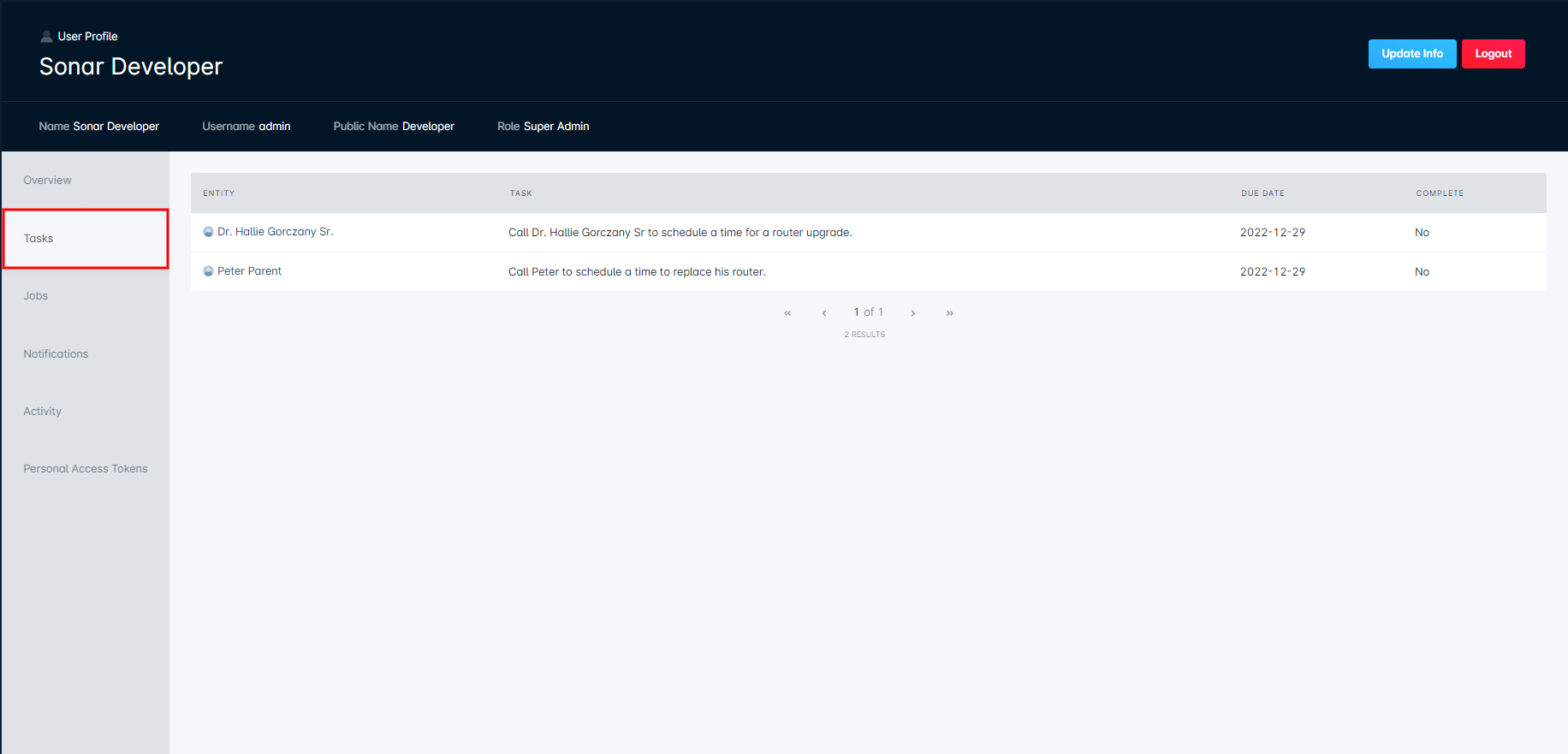
Jobs
Any jobs that your user is assigned to will appear here, along with the date and time it is scheduled for, the length in minutes, the job type, and the entity that the job is associated with. Clicking on the entity will automatically navigate you to the account management page.

Notifications
This is where users can select the type of notification they wish to receive, if any, for each of the listed events; through the “Email Me” and “In-App Notification” toggles, users can decide whether they wish to receive email alerts, in-app notifications, or both when specific events occur.
When an in-app notification is received, a red badge will appear on the Sonar logo, indicating the number of unread notifications; clicking on the icon will open the notifications list where users can view further details.
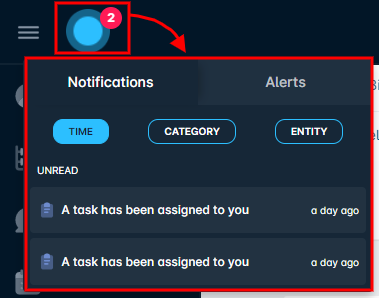
For more information on Notifications and Alerts in Sonar, check out the Notification Preferences article.
Activity
A log of changes and activity on the user account is shown here, along with the avatar of the user responsible for the change, and a timestamp of when the change was made. Clicking on an item from the log will expand to show further details about that activity.

Personal Access Tokens
Any personal access tokens that have been generated for the user will be listed here, along with the name the access token was given when created, the date and time it was created, and will provide the option to delete.
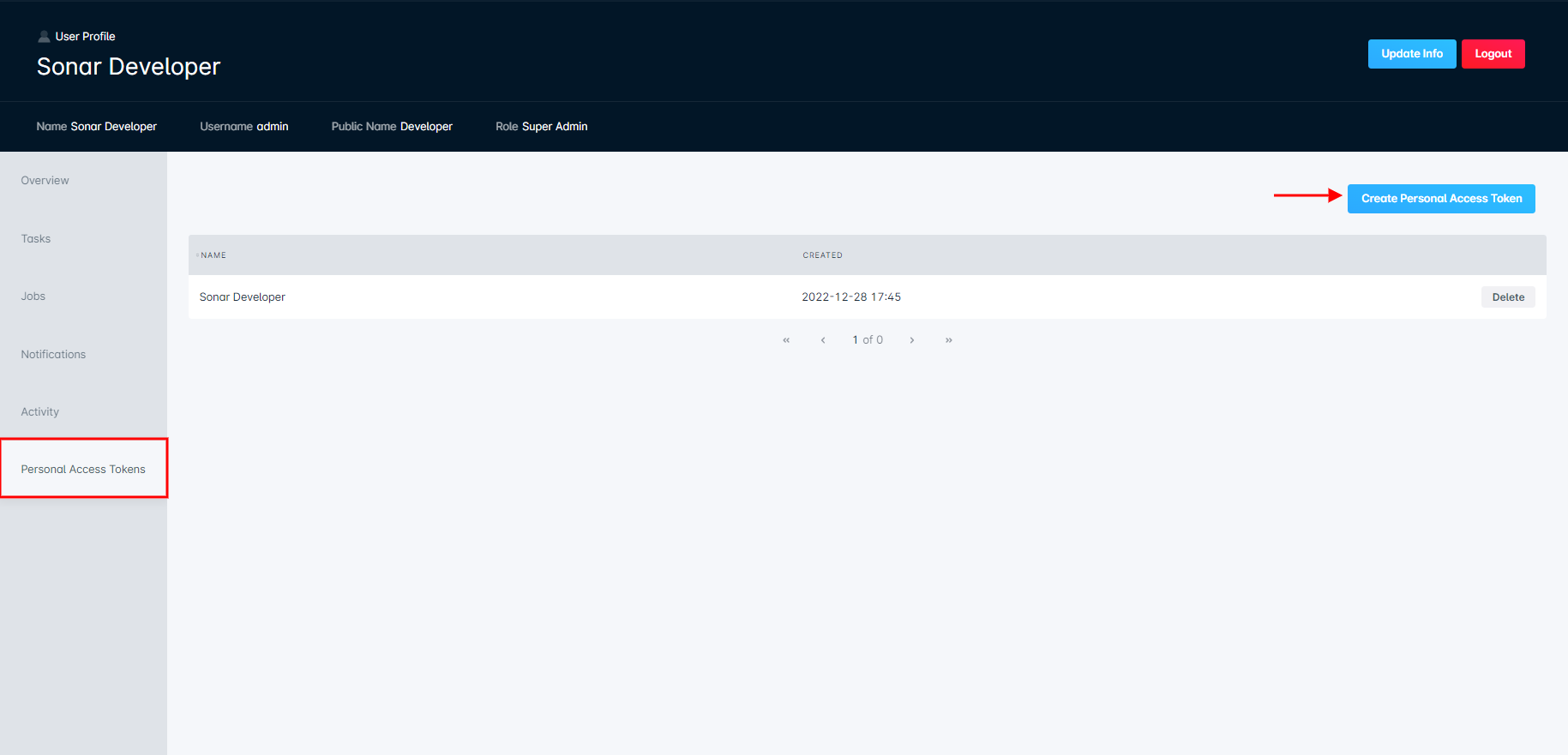
Create Personal Access Token: clicking on this option from the list will allow you to generate a personal access token for the user. You will first be prompted to provide a name for the access token (which will be displayed under the Personal Access Tokens section), and then after clicking “Create”, the token will be displayed to you in a separate window.
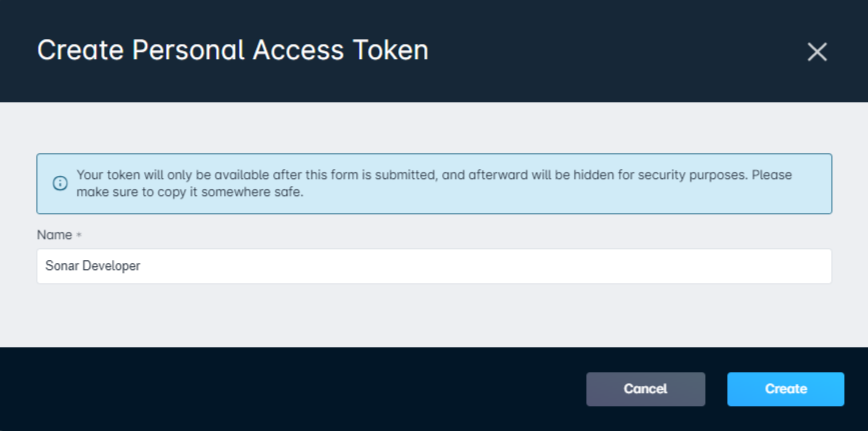
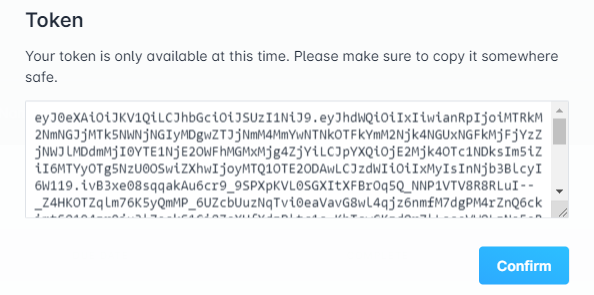
Once you have copied the token, you will then need to click "Confirm" - after these steps have been completed, the token will appear in the Personal Access Tokens section of the page as shown above.
